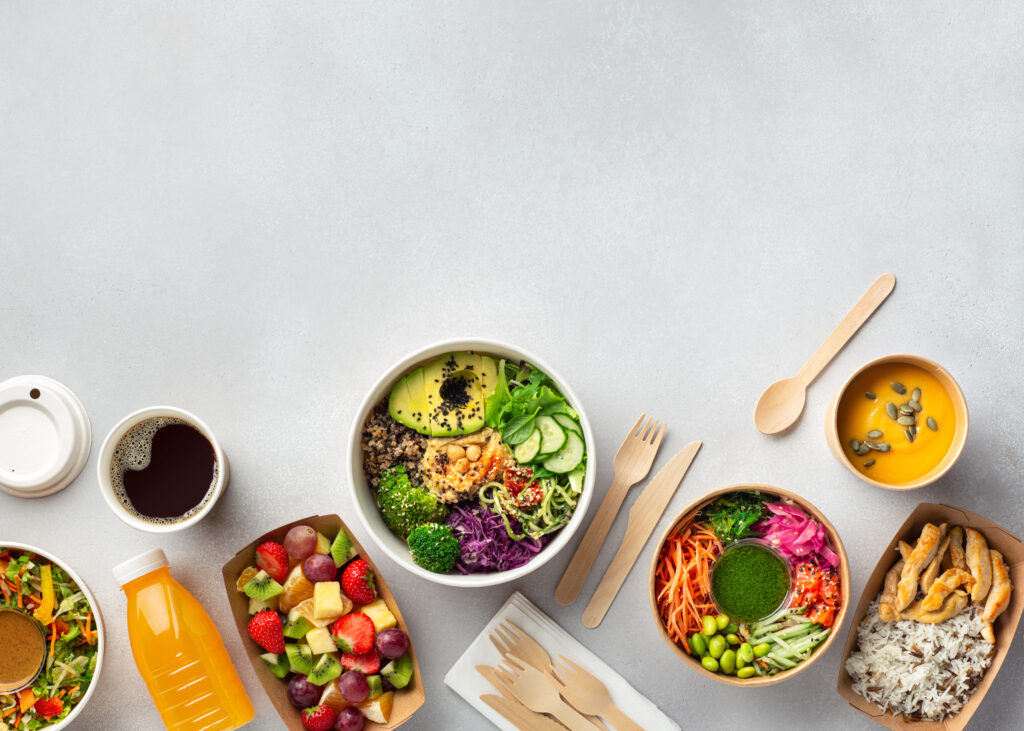In celebration of the release of our 2025 Food and Beverage Economic Trends Report, Food Liability Insurance Program (FLIP) hosted a webinar to discuss key findings and statistics.
On February 3, 2025, Clint Bishop (Vice President of Marketing at Veracity Insurance Solutions) and Kyle Jude (FLIP Program Manager at Veracity Insurance Solutions) joined host Kyle Porter (Communications at Veracity Insurance Solutions) to share their analysis and answer live questions from attendees.
Discover their top insights for food and beverage businesses this year!
The Basics of Food Liability Insurance
Jude, who has over a decade’s worth of experience in the insurance industry, gave a quick rundown on the types of coverages every food business owner needs, including general liability and product liability insurance. Jude provided brief explanations for each of these coverages and which types of claims they respond to.
Other coverages food business owners often need include:
- Tools and equipment (aka inland marine insurance)
- Damage to premises rented
- Liquor liability
- Cyber liability
- Workers compensation
- Food trailer endorsement (exclusively offered by FLIP)
Jude acknowledged it can be “overwhelming” for business owners to know which types of coverage they need for their business, and stressed that FLIP is here to help. Our customer service team is fully licensed and available to assist with unique coverage needs.
Porter added that food businesses should constantly reassess their coverage needs as their operations grow.
Economic Findings of the Food Industry
When asked to summarize the economic outlook of the food industry, Bishop said he would define it as “cautiously optimistic.”
Across all food and beverage industries, we’ve seen roughly 6% year-over-year (YoY) growth.
Food trucks (~16% YoY), pet bakeries (~12% YoY), and farmers markets (~10.5% YoY) are the three fastest-growing categories in the industry.
On the other end, the three categories that saw the least growth in 2024 were personal chefs (5.7% YoY), bakers (1.5% YoY), and caterers (1.5%).
Bishop noted that although not all categories were growing as fast as the top three performers, they are all still trending in the right direction and contributing to business owners’ positive outlook. Almost 80% of our survey respondents believe their business will grow in 2025, despite challenges like rising food and labor costs.
Key Takeway
While some categories featured in the report experienced more YoY growth than others, all categories grew in 2024. This contributes to a feeling of cautious optimism in the food and beverage industry.Consumer Trends in the Food Industry
Understanding consumer trends and sentiments about the food industry is key to knowing where and how to reach your customers. Our report includes a wide range of consumer behavior data based on answers from over 500 respondents, many of which Jude covered in the webinar.
These notable trends included:
- The average consumer dined out 4.6 times per week in 2024 compared to 3 times per week in the previous year
- 33% of diners said they would be willing to spend up to $30 per meal compared to $11–20 in 2023
- Taste and cost are the most important aspects of a dining experience, with convenience ranking last
- 90% of consumers said the ability to customize a menu item to their taste or dietary preferences is “very important” or “somewhat important”
Key Takeway
Consumers are dining out more than ever and are willing to spend more per ticket than in previous years. Food businesses should prioritize the quality of menu items and customization over convenience to appeal to consumer demand.Marketing Trends in the Food Industry
When discussing food business marketing trends, Bishop stressed that while you want to create repeat customers, you must first attract customers to your business through a solid marketing strategy.
In his words, “Neglect your online presence at your peril.”
Following previous years’ trends, digital marketing is still paramount to your business’ success:
- 77% of diners visit a food business’ website before buying from them
- 85% of diners look at a menu online before visiting or ordering from a food business
Bishop highlighted that while word-of-mouth still tops the list of the best marketing strategies, he considers social media equally important. Social media is also an excellent way to generate word-of-mouth referrals by using previous diners as ambassadors for your business.
However, Bishop also encouraged food business owners to invest in email marketing. You can control the conversation via email more than you can on a social media platform, which will always be owned by a different company with its own agenda. If you aren’t collecting customer emails yet, 2025 is a great year to start.
Notably, our survey data showed that 79% of business owners said they were not or were unsure about implementing artificial intelligence (AI) in their marketing efforts. While Bishop understood this hesitancy, he encouraged business owners to experiment with it in 2025, especially to help with social media marketing efforts.
Key Takeway
Digital marketing still reigns supreme for food and beverage businesses. While having a strong social media strategy is key, food business owners should invest in a direct-first approach by investing in email marketing.State of the Food Liability Insurance Industry in 2025
Compared to the previous year, 2024 showed a decrease of 4.4% in FLIP’s total number of insurance claims. Bishop shared that this could be due to increased risk awareness among food business owners, leading to fewer claims.
One piece of data that surprised Bishop was that the most common type of claim changed between 2023 and 2024. “Accident causing damage” represented 31% of all claims filed with FLIP, bumping auto and trailer claims down to number two at 24%.
The average payout for all claims filed in 2024 was $3,385. Bishop noted this is six times the annual coverage cost of a FLIP policy, highlighting the importance of coverage.
Additionally, the majority of all insurance claims resulted in a payout, demonstrating that the cost of a monthly or annual premium is worth knowing you have a financial safety net if an accident occurs.
Key Takeway
The total number of claims decreased in 2024, but most claims filed resulted in a payout. While food businesses may be improving their risk mitigation strategies to prevent claims from occurring, FLIP is still there to cover them when the need arises.Liability Claim Examples and Risk Mitigation
To illustrate the importance of having food liability insurance, Jude shared several real claims submitted by FLIP policyholders.
This included an instance where three employees were cooking in a policyholder’s commissary kitchen and part of a tilt skillet came loose, causing a small explosion. The employees suffered second- and first-degree burns, resulting in a $1,000,000 payout.
Jude also shared several risk mitigation strategies food business owners should implement to avoid needing to file a claim, including:
- Keeping your business and any working areas clean and free of debris
- Storing food items properly with clear labels
- Having regular equipment inspections (both internally and by a third party)
Installing security systems in case of theft
Key Takeway
Claims happen, and they can cost your business. While risk mitigation is critical, one of the best things you can do for your business is transfer your risk by having comprehensive liability insurance.Webinar Q&A and Final Thoughts
After the panelists shared insights from the report, they took questions from the audience and shared their personal takeaways.
Bishop noted that he shares the optimism of most food business owners because the market is strong, despite cost concerns. As for his thoughts on insurance, he acknowledged that while many people feel reluctant to purchase coverage and don’t want to think about it, it’s like a spare tire: there for you when you need it most.
Jude encouraged food business owners to ask themselves one very important question: without insurance, how much of a loss can you sustain and stay in business? He stressed that insurance is the single best way to protect your investment and encouraged business owners to assess their coverage needs.
To this point, FLIP is here to support your business and provide the coverage you need at a competitive price so you can focus on growing your business.
For more details and analysis from Bishop and Jude, watch the full webinar and check out this year’s trend report today!

Alex Hastings
Seattle-based copywriter and (WA) licensed insurance agent Alex Hastings leverages her experience as a lover of fast-casual food, baked goods, and iced oat milk lattes. She holds a B.A. in Creative Writing from Western Washington University. Before working at Veracity, she was a retail copywriter at Zulily and an English language teacher in South Korea. Alex is fully trained on FLIP insurance coverages and writes content that connects food and beverage business owners with the policies they need.
Seattle-based copywriter and (WA) licensed insurance agent Alex Hastings leverages her experience as a lover of fast-casual food, baked goods, and iced oat milk lattes. She holds a B.A. in Creative Writing from Western Washington University. Before working at Veracity, she was a retail copywriter at Zulily and an English language teacher in South Korea. Alex is fully trained on FLIP insurance coverages and writes content that connects food and beverage business owners with the policies they need.

